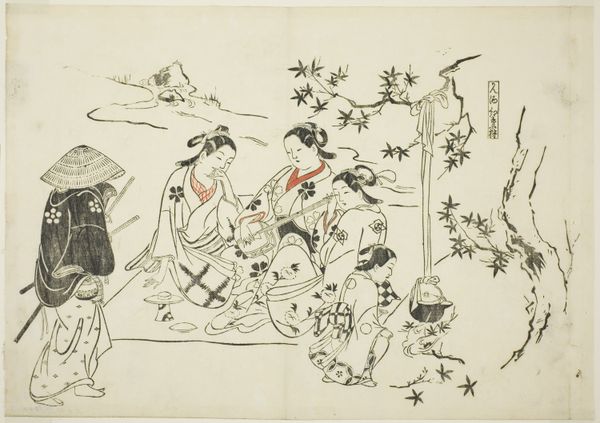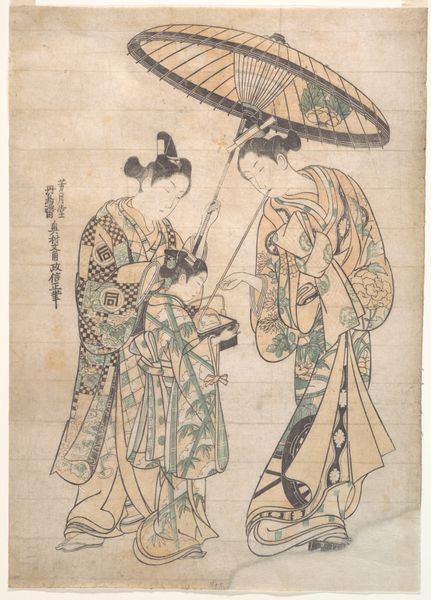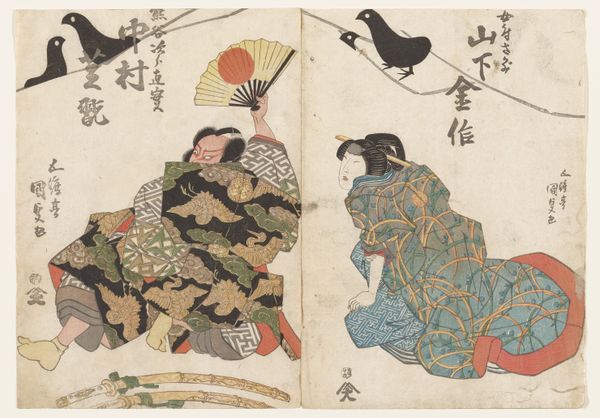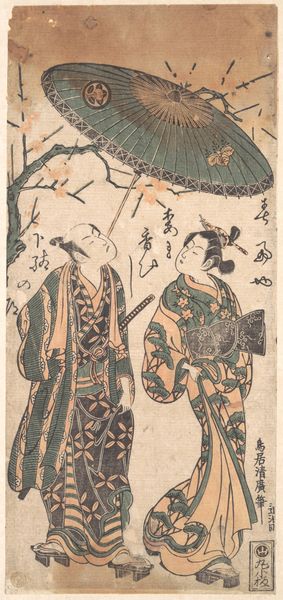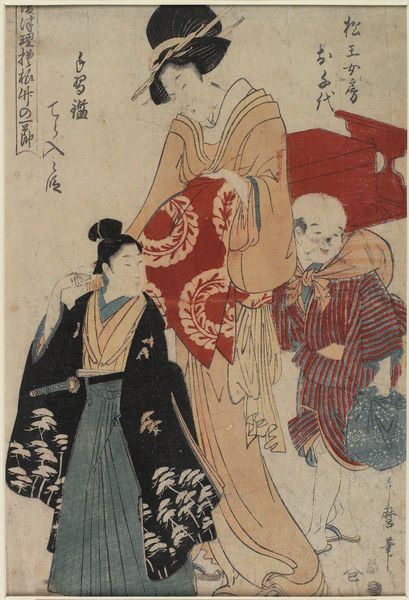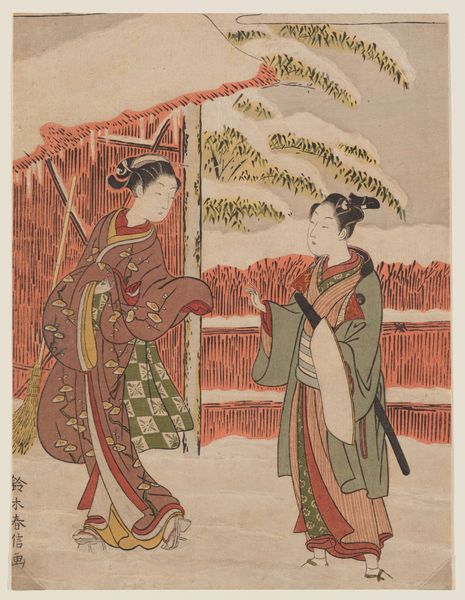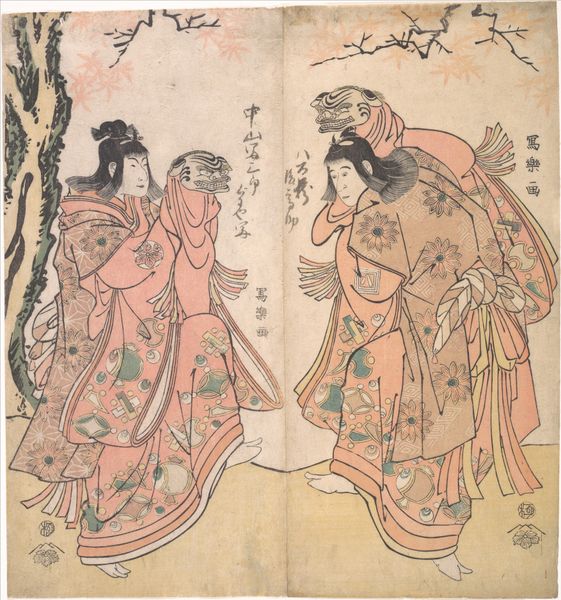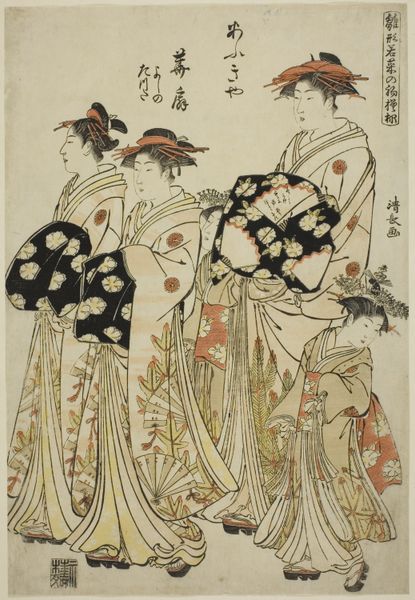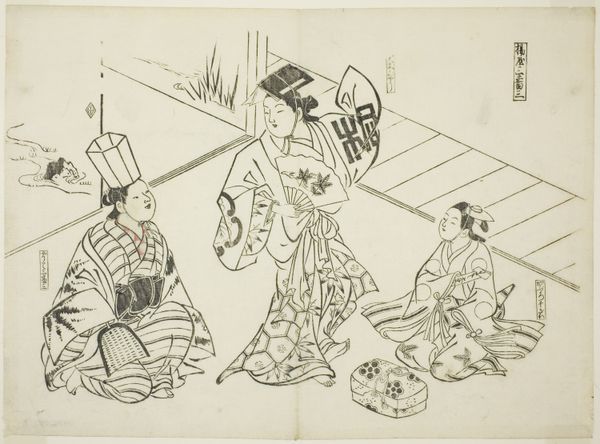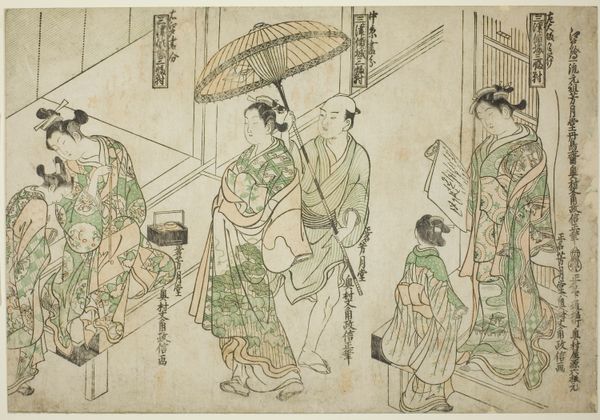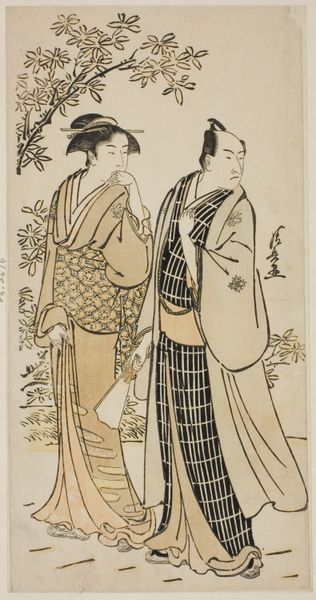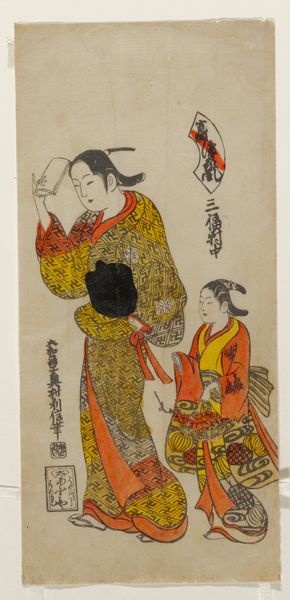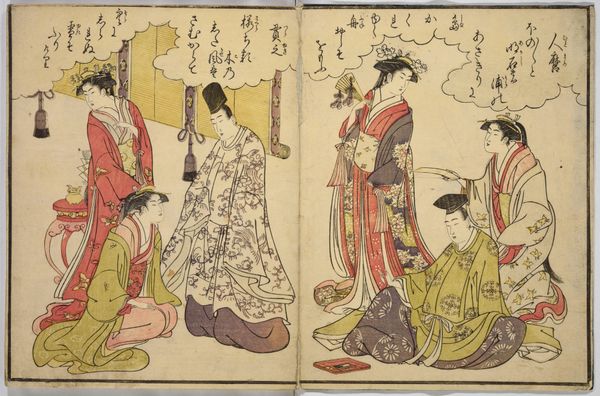
Sleeve-Letter Takasago (Sodefumi Takasago), no. 2 from a series of 12 prints depicting parodies of plays c. 1716s - 1726s
0:00
0:00
print, ink
#
narrative-art
# print
#
pen sketch
#
asian-art
#
ukiyo-e
#
figuration
#
ink
Dimensions: 27.2 × 38.5 cm
Copyright: Public Domain
Curator: What strikes me first is the utter serenity of this image. Two figures amidst a sparse landscape. There's an undeniable tranquility in its simplicity. Editor: Yes, the deliberate monochrome enhances that mood. This is a print by Okumura Masanobu, created sometime between 1716 and 1726, and it's titled "Sleeve-Letter Takasago," number two in a series of twelve parody prints. What we're seeing is a "mitate," a parody, of the famous Noh play "Takasago." Curator: The visual symbols at play are immediately engaging. I can see traditional patterns, evoking a sense of temporal depth. Do these reference something specific to that era, or perhaps the theatrical tradition? Editor: Good eye. Masanobu's work, located here at The Art Institute of Chicago, plays on recognition. The "Takasago" is an auspicious play about an old couple who represent the spirits of the pine trees. It symbolizes longevity and marital harmony. Here, Masanobu transposes this venerable story into the pleasure quarters. Note the discarded letters and the broom. Curator: So the letters discarded near her feet disrupt that initial feeling of peace? A kind of dissonance, as the figure sweeps aside the amorous advances. Does this act of sweeping itself carry any deeper symbolism within the culture? Editor: The act of cleaning likely had, then as now, practical and ritual meaning. Visually, it serves to invert expectations of the traditional "Takasago," thus functioning as sharp commentary on social life of the time. These "parody pictures" were a recognized part of the artistic landscape in Edo-period Japan, often providing sharp insights. Curator: I see. Masanobu cleverly utilizes existing archetypes and expectations, and layers a narrative that is accessible to the cultural moment, yet speaks to deeper patterns of human connection – and disconnection, as evidenced in this scene. What might those pine trees symbolize? Editor: Traditionally, pine trees were associated with steadfastness and long life, reinforcing the themes of the original Noh play. Even in the parody, their inclusion offers a visual and symbolic anchor, highlighting Masanobu’s subtle dialogue with cultural traditions even while playfully subverting them. They still speak of an idealized harmony, now comically out of reach. Curator: I now view it completely differently. That slight air of melancholy I initially detected becomes something far more complex, laden with societal critique. It really showcases how images retain so much culturally determined information across time. Editor: Indeed. It is a fine example of art serving as a mirror – both reflecting and reshaping cultural values, sparking debate, and challenging conventions of its era.
Comments
No comments
Be the first to comment and join the conversation on the ultimate creative platform.
